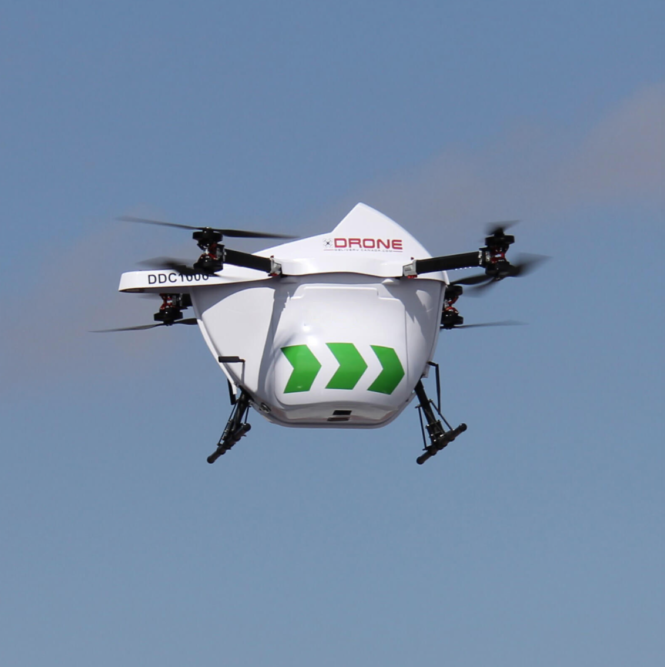Relaxed regulations for drone parcel delivery to take effect in March
Vendors applaud FAA’s “progressive actions” in advancing the use of unmanned aircraft for logistics.

Companies that build delivery drones are cheering a move by the U.S. Federal Aviation Administration (FAA) to relax certain restrictions over use of the flying machines in public airspace, saying the move improves the regulatory environment for package delivery operations.
The new ruling was published in the Federal Register on Jan. 15, starting a 60-day countdown to become an official ruling in mid-March. The agency noted that the new rules mark “the next step in the FAA’s incremental approach to integrating unmanned aircraft systems (UAS) into the national airspace system (NAS).” The process had begun when the FAA announced on December 28 that it had relaxed its requirement for special waivers to allow the use of small UAS drones “at night or over people.”
Logistics drone makers have quickly applauded the change, with Toronto-based Drone Delivery Canada Corp. (DDC) saying Tuesday it “is pleased to express its support for the Federal Aviation Administration's progressive actions in making amendments to advance the use of Unmanned Aircraft Systems (UAS) for logistics and small package delivery."
"In January 2021, the FAA added new rules to 14 CFR Part 107 to permit the expansion of routine flights and created four categories of UAS for flights over suburban/urban areas assuming certain, specific criteria are met,” Steve Bogie, DDC’s vice president – Flight Operations & Technology, said in a release. “These new rules greatly improve the regulatory certainty for UAS delivery operations in the United States and represent a significant step forward toward UAS integration into the US airspace.”
Reno, Nevada-based drone vendor Flirtey likewise cheered the new ruling, retweeting an FAA social media posting with the hashtag “#StartTheClock.”
By the FAA’s own estimate, the change could accelerate a growing trend. The federal agency is now forecasting “phenomenal” growth in the use of airborne delivery for logistics and small packages, saying the sector could see 500 million deliveries annually by 2030, relying on a nationwide fleet of 40,000 unmanned aircraft systems (UAS).
In a January report titled “Aerospace Forecast 2020 – 2040,” the agency said the number of small commercial drones could rise as much as 210% by 2024, compared to 2019 figures. And flights operated by larger UAS will rise 100% by 2024 versus 2019 levels, the agency forecasted. The FAA defines a small UAS as weighing less than 55 pounds maximum take-off weight and a large UAS as having maximum take-off weight above 55 pounds.
However, that sunny forecast had some strings attached, noting that the urban air mobility (UAM) sector would first have to survive “stiff competition” from other delivery modes and to justify its infrastructure costs.
“Markets for UAM services, such as delivering packages by drone or large cargo or unmanned passenger shuttles, have a huge potential both in the United States and globally,” the FAA report said. “However, UAM services are likely to face stiff competition from technological advances in industries with close substitutes, such as ground transportation. In addition, the high costs of urban infrastructure to facilitate these activities could slow down UAM adoption.”
The report also noted technical challenges such as regulatory restrictions. “If, for example, professional grade UAS meet feasibility criteria of operations, safety, regulations, and satisfy economics and business principles and enters into the logistics chain via small package delivery, the growth in this sector will likely be phenomenal,” the FAA found.
"Drone Delivery Canada Supports FAA Regulatory Advancements", visit our website to read the full press release!https://t.co/KLddl0yV6O#DroneLogistics #DroneDeliveryCanada #TheFutureIsNow #PressRelease pic.twitter.com/vAHJ7XxUuK
— DroneDeliveryCanada (@DroneDeliveryCa) January 26, 2021
Today, the FAA’s rule on drone operations over people officially published in the Federal Register https://t.co/puHYE61imD. The final rule also allows routine operations at night under certain conditions. Learn more at https://t.co/aVpNJ46Chy. #StartTheClock pic.twitter.com/iaTcl5ULlk
— FAA Drone Zone (@FAADroneZone) January 15, 2021
Related Articles

Copyright ©2024. All Rights ReservedDesign, CMS, Hosting & Web Development :: ePublishing